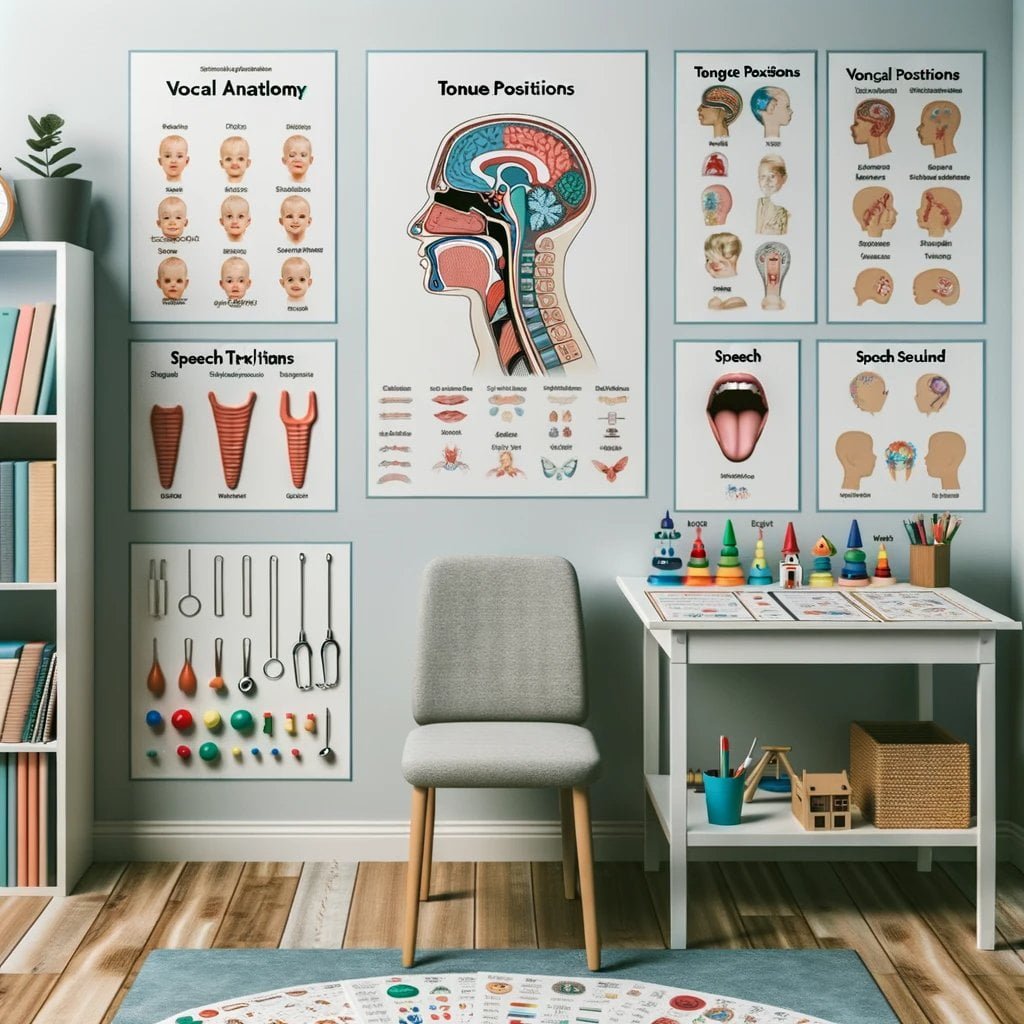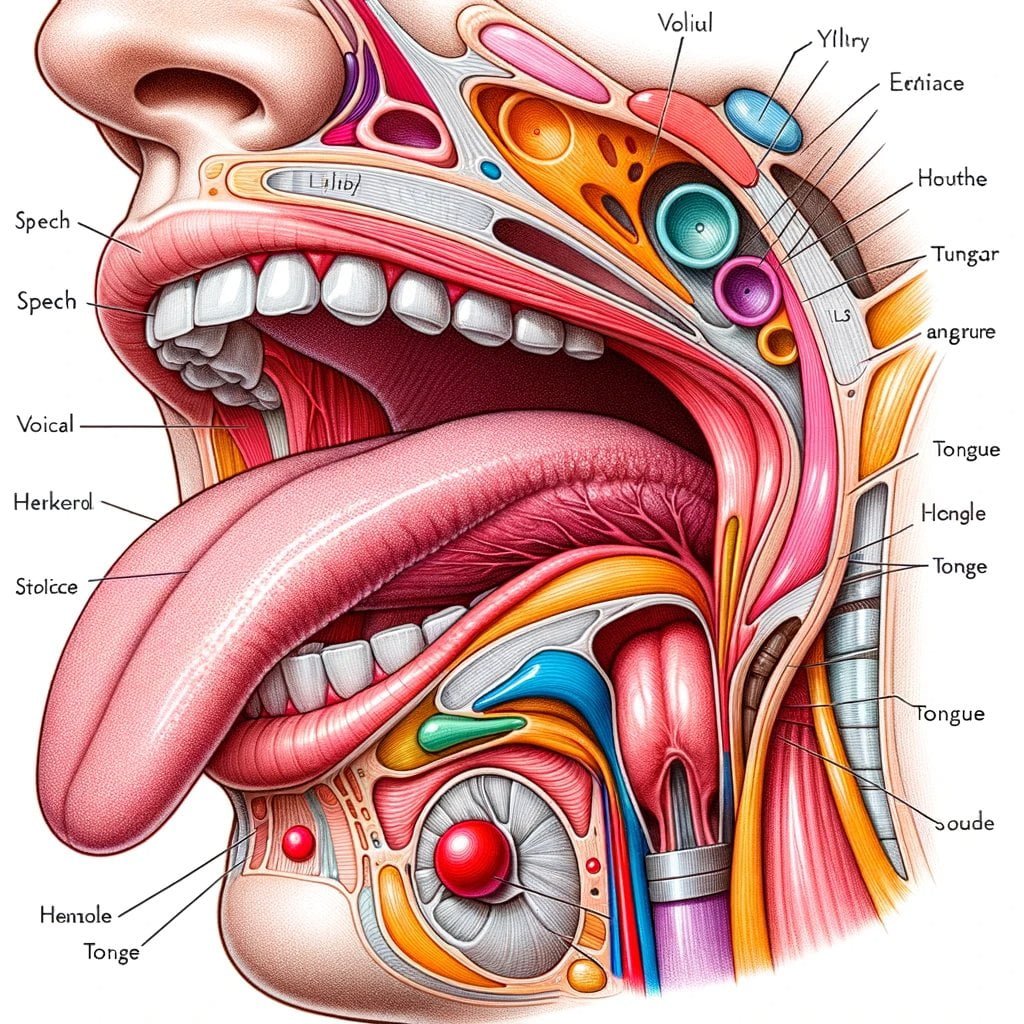Speech language pathology improves communication and quality of life for people of all ages with speech and language issues. These enthusiastic and experienced experts use evidence-based tactics and therapy techniques to treat articulation and phonological issues, language delays, fluency disorders, and developmental disabilities. Speech language pathologists help clients improve their expressive and receptive communication abilities by understanding speech production, language development, and cognitive processes. Families and interdisciplinary teams construct personalized therapy plans to meet each person’s needs and aspirations. Speech language pathologists help their patients gain confidence, independence, and effective communication skills, improving their lives.
What is the goal of speech language pathology?
Speech language pathology improves communication and quality of life for people with speech and language disorders. Speech language pathology aims to improve communication and help people comprehend and express themselves. Speech language pathologists assist clients realize their full expressive and receptive communication potential by addressing articulation and phonological abnormalities, language delays, fluency issues, and developmental disabilities.
Speech language pathology serves several purposes and is adapted to each person. Key goals and objectives in this field include:
1. Developing clearer speech
Speech language pathology aims to improve speech clarity. This entails improving articulation, pronunciation, and speech fluency to make communication clear. Speech language pathologists use evidence-based methods to increase speech production and intelligibility.
2. Teaching alternate methods of communication
Speech-language pathologists teach alternative communication modalities when verbal speech is difficult or impossible. AAC devices, sign language, and other visual assistance can help with communicating. People should be able to express themselves and interact meaningfully.
3. Developing reading and writing skills
Speech language pathology also improves reading and writing. Speech language pathologists improve reading, vocabulary, and comprehension. They use many methods to help people learn and develop these communication abilities.
4. Strengthening throat and neck muscles
Speech language pathologists develop throat and neck muscles to promote swallowing. They can improve oral motor control and swallowing by targeting these muscles. This is essential for good nutrition, hydration, and communication.
5. Coordinating treatment programs and referrals
Speech language pathologists coordinate comprehensive treatment regimens with other specialists and interdisciplinary teams. To guarantee holistic assessment and treatment, they collaborate with educators, physicians, occupational therapists, and other professionals. Speech language pathologists may also recommend specialized treatments or services to assist communication goals.
6. Providing culturally competent assessment and treatment
Speech language pathologists examine and treat communication impairments in various settings, including schools, with quality and cultural competence. Clients’ ethnic and linguistic backgrounds are considered when creating therapy plans. This makes therapy more inclusive and effective.
7. Diagnosing and treating communication and swallowing disorders
Speech language pathologists diagnose and treat several communication and swallowing issues. They diagnose these diseases and create personalised treatment regimens after thorough exams. They help people overcome challenges and achieve communication goals with evidence-based solutions.
In conclusion, speech language pathology aims to improve communication and quality of life for those with speech and language disorders. Speech language pathologists use targeted interventions to improve speech, reading, writing, throat and neck muscles, coordination, culturally competent assessment and treatment, and diagnosis and treatment of communication and swallowing disorders. Speech language pathologists empower clients with effective communication skills, boosting confidence, independence, and success.
For fascinating speech pathology facts that will astound and enlighten you, click here. Discover the amazing world of speech pathology and uncover the truths behind this vital field. Explore the URL .speech-pathology-facts to dive deeper into the wealth of knowledge awaiting you. Prepare to be captivated by the intricacies and wonders of speech pathology.
Implementing Evidence-Based Treatment Approaches
I aim to improve speech and language abilities as a speech language pathologist. I use research- and clinically-proven therapeutic methods to achieve this. This article will discuss how evidence-based practice in speech language pathology might improve client results.
The Power of Evidence-Based Practice
In speech language pathology, evidence-based practice is essential for high-quality services and client success. It means combining the best research with clinical knowledge and considering our patients’ beliefs and preferences. Evidence-based therapy methods allow us to reliably give therapies that improve communication and quality of life.
Disseminating Protocols and Flexibility within Fidelity
Protocols help execute evidence-based treatments. Standardized protocols explain therapy phases and techniques. They guide therapists in offering evidence-based therapies. Fidelity must also be flexible. To fit individual needs, the protocol may need to be adjusted. This flexibility allows customized therapy regimens to maximize evidence-based interventions.
Benefits of Protocols in Promoting Evidence-Informed Interventions
Protocols help promote evidence-based allied health therapies, including speech language pathology. They connect research and therapeutic practice, helping therapists apply research findings. Therapists can confidently use evidence-based therapies by following protocols. Therapists can measure progress and evaluate interventions with consistency.
Implementation Strategies for Promoting Evidence-Based Interventions
Implementing evidence-based interventions requires careful planning and strategic implementation. Speech language pathologists can utilize various strategies to promote the adoption of evidence-based practice in their clinical settings. Some strategies include:
- Training and Education: Providing ongoing training and education to therapists on the latest research and evidence-based interventions.
- Collaboration and Networking: Encouraging collaboration and networking among speech language pathologists to share knowledge, experiences, and resources related to evidence-based practice.
- Continued Professional Development: Encouraging therapists to engage in continued professional development activities to stay updated on the latest research and evidence-based interventions.
- Monitoring and Evaluation: Regularly monitoring and evaluating the effectiveness of interventions to ensure they align with the best available research evidence.
The Role of Single Case Studies in Speech Pathology Interventions
Speech language pathology uses single case studies as well as randomized controlled trials, the gold standard for research. In-depth single case studies reveal the efficacy of specific interventions for a specific client. These investigations add to the evidence and help guide therapy decisions, especially in difficult cases.
Communicating the Importance of Evidence-Based Practice
Speech pathologists must convey the value of evidence-based practice to clients, organizations, and the community. Transparently explaining our interventions and providing evidence-based explanations can increase trust and confidence in our therapy method. Educating clients and their families about the evidence supporting various interventions empowers them to engage in therapy and make informed decisions.
Integration of Research Evidence, Client Perspectives, Clinical Expertise, and External Context
For comprehensive care, speech pathology uses research evidence, client values, clinical expertise, and external environment. Speech language pathologists can tailor therapy to clients’ requirements by considering all these elements. The holistic approach guarantees that therapies are evidence-based and adapted to each client’s needs.
Steps of Knowledge Transfer in Evidence-Based Practice Implementation
Knowledge production, distillation, diffusion, and application are required to implement evidence-based practice. This ensures speech language pathologists receive the latest research and apply it to improve therapeutic outcomes. Speech pathologists can use evidence-based treatments by remaining current on research, attending conferences and workshops, and learning.
Conclusion
In conclusion, evidence-based treatment is vital for improving speech language pathology communication abilities. Therapists can provide high-quality, evidence-based therapies by following defined protocols, remaining current on research, and addressing client requirements and preferences. Speech and language-impaired people gain independence, communication skills, and quality of life. Speech language pathologists can improve their patients’ lives by striving for evidence-based practice excellence.
Promoting Communication Skills and Overall Quality of Life
Communication is vital to our existence. We can communicate, share ideas, and understand one other. Communication may be difficult for speech and language impaired people. Speech-language pathology helps. As a speech language pathologist, I aim to improve communication and quality of life for all ages.
Understanding the Importance of Communication
Effective communication is important in many areas of life. Communicating clearly and understanding others is essential in the workplace, school, and personal life. We may share knowledge, make relationships, and overcome life’s problems.
The Role of Speech Language Pathology
Speech language pathology diagnoses and treats communication impairments. Speech language pathologists have many evidence-based treatments for articulation, phonological, language difficulties, fluency, and developmental disabilities.
Customized Therapy Plans
Speech language pathology understands that each person has distinct needs and goals and tailors therapy accordingly. Personalized therapy plans can be created with families and interdisciplinary teams. This strategy considers the individual’s strengths, weaknesses, and preferences for a comprehensive response.
Building Communication Skills
Speech language pathologists use many methods to improve communication. Examples include active listening, straightforward expression, and recognizing flaws. Body language and other nonverbal communication must also be understood. According to Albert Mehrabian, communication is 55% non-verbal, 38% vocal (tone and inflection), and 7% words.
Improving Overall Quality of Life
Speech language pathology improves quality of life by improving communication abilities. Effective communication helps people to express themselves and build meaningful relationships while reducing stress and promoting wellness. Effective communication boosts independence and confidence in job, school, and in relationships.
Assessing the Impact of Communication
The ASHA Quality of Communication Life Scale measures how communication affects a person’s life. This assessment illuminates how communication issues affect daily life. It helps set therapy goals and track success.
Conclusion
In summary, speech language pathology is focused on promoting communication skills and enhancing the overall quality of life for individuals facing speech and language challenges. Through personalized therapy plans, evidence-based strategies, and a holistic approach, speech language pathologists aim to empower individuals to reach their full potential in expressive and receptive communication skills. By improving communication abilities, we open doors to new opportunities and foster confidence, independence, and effective communication strategies in those we serve.
FAQ
What is the goal of speech language pathology?
The goal of speech language pathology is to improve the communication abilities and overall quality of life for individuals of all ages facing speech and language challenges. Speech language pathologists work to assess and treat various disorders such as articulation and phonological disorders, language delays, fluency disorders, and developmental disabilities. They utilize evidence-based strategies and therapeutic techniques to empower their clients to reach their full potential in expressive and receptive communication skills.
How does effective communication impact overall quality of life?
Effective communication plays a crucial role in various aspects of life. It allows individuals to express themselves and improve personal and professional relationships. Good communication skills at work are important for selling ideas and expressing oneself effectively. Additionally, effective interpersonal communication can reduce stress, promote wellness, and improve overall quality of life.
What are some strategies for improving communication skills?
There are several strategies for improving communication skills. Active listening is an important skill that involves fully engaging in the conversation and comprehending the speaker’s message. Clear expression is another strategy that focuses on effectively conveying thoughts and ideas. Recognizing weaknesses in communication can also help individuals identify areas for improvement and seek appropriate support.
How important is body language in face-to-face communication?
Body language plays a significant role in face-to-face communication. According to Albert Mehrabian, communication is 55 percent non-verbal, 38 percent vocal (tone and inflection), and 7 percent words. Leaders should be aware of their own nonverbal communication and control it to support their message. Understanding and interpreting body language can enhance communication and facilitate better understanding between individuals.
How can speech language pathology enhance communication skills?
Speech language pathology plays a critical role in enhancing communication skills. Speech language pathologists integrate external research evidence, client perspectives and values, clinical expertise, and external context to provide evidence-based interventions. By developing customized therapy plans, collaborating with families and interdisciplinary teams, and utilizing evidence-based strategies, speech language pathologists aim to foster confidence, independence, and effective communication strategies in those they serve.
- Unlock 6000+ words beginning with he: A comprehensive analysis - April 20, 2025
- Mastering -al Words: A Complete Guide - April 20, 2025
- Master Scrabble: High-Scoring BAR Words Now - April 20, 2025



















